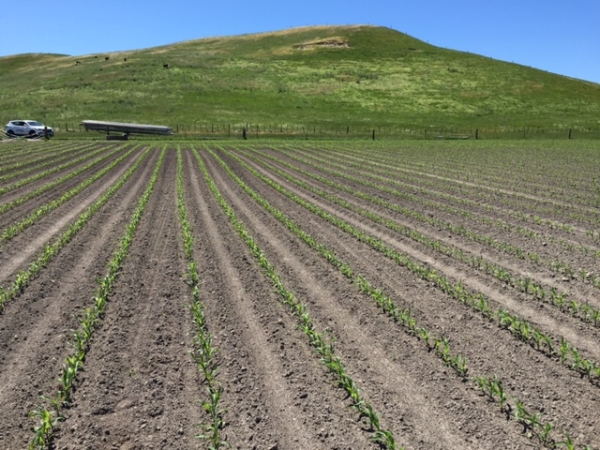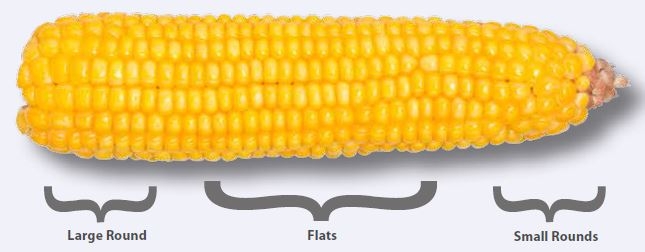Size and Shape of Maize Seed
Questions arise every year regarding effects of seed size and shape on plantability and yield potential.
It is important to recognise the variability in terms of seed size and shape, and the effect these may have on plant establishment and population. Seed is sized to help maintain a uniform sample – consistent seed size will help with plant counts and seed spacing.
To understand the effect seed size may or may not have on yield potential, it is important to:
- understand how seed size is determined
- examine how it might affect emergence and early growth
- understand the importance of proper planter settings
See below to understand how seed size is determined.
Determining seed size: Production
Determining seed size: Production
Seed sizes from hybrid production will vary field to field, and year to year due to many factors. These include specific hybrid characteristics, parent tendencies and growing conditions, especially during the pollination and fill period. Seed from a single cob falls into many size/shape categories. Large rounds usually come from the base of the ear, flats from the centre and small flats and small rounds from the tip. Very small seed usually comes from the base or tip of the cob, but will fall outside the weight ranges established by the grading system.
Effect on Emergence & Early Growth
Effect on Emergence & Early Growth
There have been minor differences in emergence noted under adverse planting conditions. Large seed can have slightly decreased emergence rates in dry soil conditions as the amount of moisture needed for germination and emergence is relative to the size of the seed. Small seed can have slightly decreased emergence in cool or crusted soils, as the amount of energy needed in those situations may exceed the amount stored in the endosperm. Even with the potential effect on emergence and reduced early vigour, the effect of seed size on yield potential is not significant if harvest populations are similar.
Importance of Planter Settings
Importance of Planter Settings
This is where seed size and shape matters. Planter settings should be adjusted for accurate seed positioning, placement, and the intended population. When set properly for the seed size, a planter can more accurately singulate and deliver the seed. Planters that are not properly adjusted to seed size can deliver excessive numbers of seed or misses, reducing grain yield potential.
Vacuum Planters in General. Depending on if the planter is equipped with cell or flat disks, adjustments can be made to the vacuum pressure, cell size, and seed singulation devices that can affect plantability.
Additionally, the use of talc or graphite can help improve seed flow and drop. When planting small seed, consider increasing the talc or graphite rate to account for the increased surface area with small seed. The importance of talc or graphite increases with high rates of seed treatments and/or humid conditions. Mixing the talc or graphite well throughout the hopper or tank can help provide adequate coverage. Another component to examine regardless of disk type is the way the disk is adjusted relative to the meter housing. Having the disk rub the housing with light contact can help improve singulation, reduce seed damage, and help load the planter drives, improving their consistency.
Finger Pick-up Planters. Based on research conducted in Illinois, USA, planter test stand indications for John Deere and Kinze® Finger Pick-up planters show a tendency to over plant small seed, depending on the seeds per kg, the seed coating, and the seed shape. Singulation averaged around 95% to 96% for small seed and ranged plus or minus two to three percent from the average. Additionally, the Precision Finger Meter from Precision Planting was capable of delivering 98.5% singulation, on average, for small seed. Planter speed is a major component of calibration and accurate seed placement. Planting at speeds faster than recommendations of the manufacturer's manual may result in poor seed singulation and placement, which can adversely affect yield potential. Likewise, planting at speeds lower than the recommended range may result in a lower than intended population. Keeping a finger pick-up planter well maintained is a good way to help minimise planting errors.
Summary
Summary
Overall, seed size does not affect genetic yield potential. Having a planter set properly can improve your opportunity to achieve an optimal stand by minimising skips, doubles, and triples. Focusing on genetic yield potential, seed quality, increasing populations, and identifying planter settings that optimise plantability is helpful in increasing yield potential.



